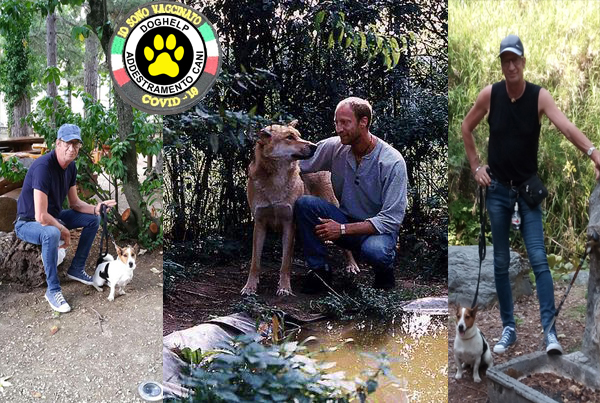 Our attitude (behavior) towards the dog;
Our attitude (behavior) towards the dog;
In previous articles I have already mentioned how important the use of our voice is for raising, guiding and training the dog. In addition to the good use of the voice, it is also extremely important for the behavior of the dog how you use your body, your own behavior.
Unfortunately, it is often not recognized or considered less important by dog owners how to show themselves to the dog in a good posture.
Every animal owner should be aware that animals (including our dogs) mainly respond to the body language of the individual towards them. By “reading” the body language of the opponent an important part of the reaction (counter-behavior) of the animal is determined.
 Ears-tail, coat and posture;
Ears-tail, coat and posture;
Dogs respond to each other by observing the various postures and physical behaviors. Ears upright, tail up, bristles indicate a confident, dominant and even aggressive behavior of the dog.
The tail low, ears backwards and keeping the body small, indicate, for example, a timid or submissive behavior.
We humans also use – mostly unconscious- body language to leave an impression or send signals to other people. An example is when you are talking to a person and the other person is bending towards you and is looking at you. This means that you have at least his full interest and he shows confidence in you.
However, if the person leans back during a conversation – or worse – he also folds his arms over each other during the session, he takes distance from you and is not very interested in what you have to say.
 When the person, you are talking to, during his story rubs with his index finger past his nose or looks up to the right; then there is a good chance that he is telling a lie at that moment.
When the person, you are talking to, during his story rubs with his index finger past his nose or looks up to the right; then there is a good chance that he is telling a lie at that moment.
And so there are hundreds of different behaviors that people (unconsciously) use or combinations of them.
The majority of people are therefore not aware of the body language they display or of the body language that the person with whom we are in contact profiles.
We have largely lost this important communication tool. Our communication has concentrated almost entirely on our language use.
However, in animals, including dogs, this is the opposite. Dogs consciously use their body behavior to express their state of mind.
Because dogs control a restricted vocal and language use, the “reading” of the individual’s behavior towards them is therefore also the most decisive.
 Dogs observe and “read” our behavior;
Dogs observe and “read” our behavior;
Dogs are very good observants. I have already explained this in other articles. Dogs react strongly to the tone and our use of our voice, but they also observe our behavior with respect to him very accurately.
When we make ourselves small and squat on the floor, for example, the dog will explain it as humbling behavior and he will be friendly or less restrained.
However, when we set up ourselves quickly and confidently, the dog will explain that to us as more dominant behavior. If we bend over the dog, it will even be perceived as a threat for the dog.
When a dog is well socialized or when he knows his owner (boss) better, he will react less rigorously to the behavior we have shown, because he has learned that the behavior of his human owner has got less immediate meaning for him.
Despite this learned and socialized behavior, the dog will always keep a close eye on our behavior. It remains one of the most important forms of communication for him to understand what we intend to do for him.
If we approach a strange dog or a dog socialized less on human behavior, then that animal will respond more clearly to our attitudes.
Soon more explanation about the interactions of behavior between us and our dogs.
If you have questions or comments about this article, please let me know!




